Smithsonian Museum Guide To DC
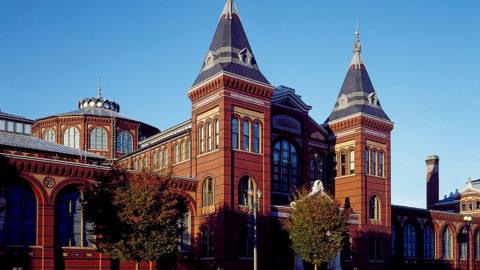
Fun Facts About the Smithsonian Museums
Founded in 1846 by British scientist James Smithson, the Smithsonian Institution has been dedicated to the expansion of knowledge and American culture for nearly two centuries. It was President James K. Polk who signed the law into effect, establishing the Smithsonian Institute after Smithson petitioned Congress in 1836. Since, the Smithsonian Institute has established nearly 20 museums and galleries, with 17 of them calling Washington, D.C. their home.
The Smithsonian Institution Building, commonly referred to as the Castle, was the first building erected as part of the complex. It was designed by architect James Renwick and was constructed between 1847 and 1855. Each of the Smithsonian museums has its own staff, ensuring a number of unique experiences throughout the complex. With almost 155 million artifacts, works of art and other specimens overseen by over 6,300 employees, Smithsonian tours are an excellent way to become acquainted with the foundations of American history and culture.
Visiting the Smithsonian Museums for the First Time? We Got You Covered!
Congratulations! You’ve decided to take a trip to Washington, D.C. and embark on some of the sensational Smithsonian tours offered to visitors. So, what should you keep in mind when visiting for the first time?
First of all, it’s a lot! With almost 20 museums and galleries throughout the city, you could return 10 times and never see the same thing twice. Decide what you want to see beforehand, and don’t waste a moment! Private group Smithsonian tours are available, but there is no skip-the-line option.
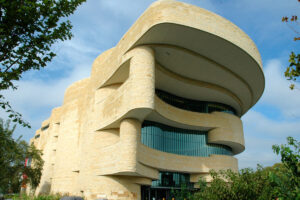
Photography is encouraged throughout the museums for noncommercial purposes only. Objects such as tripods and selfie sticks are prohibited to ensure the safety of all those in attendance.
Driving to the Smithsonian museums yourself? Consider booking your parking in advance to ensure a good price in a reasonable location.
The Smithsonian museums encourage visitors to travel lightly, as it will help you pass through security checkpoints more smoothly. Storage for personal items is available at select museums.
 Smithsonian Institution Building
Smithsonian Institution Building
Also known as the Castle, the Smithsonian Institution Building is regarded as the complex’s signature building. Home to the visitor center, guests can start their journey here and consult with in-house experts on which Smithsonian tours are right for them, with the fantastic option of starting in the Castle itself. Guests can take a tour of the Castle to learn all about its classic architecture, as well as browse countless highlights of the rest of the museums. Grab a bite at the Castle Café or any number of outdoor carts to fuel up before a long day of learning. With no admission cost, the Smithsonian Institution Building is the perfect place to begin your Smithsonian tours.
 National Museum of Natural History
National Museum of Natural History
Home to the largest natural history collection in the world, the Smithsonian National Museum of Natural History is an excellent way to learn about our place in the natural world, what came before us and how the earth became the planet we know today. With a number of exhibits and departments, there is no limit to new interests waiting to be discovered. Learn about the artworks and totems of ancient cultures in the anthropology department, or stand face-to-face with the skeleton of a triceratops in the paleobiology department. Have a taste for the finer things in life? Imagine yourself draped in the most decadent precious stones on display in the mineral sciences department. Covering 18 football fields worth of space, Smithsonian tours can teach guests about land, sea and everything in between at the National Museum of Natural History.
 National Air and Space Museum
National Air and Space Museum
The Smithsonian National Air and Space Museum is dedicated to the history of flight, starting with the vast blue sky above us and breaking into the final frontier of outer space. Witness the 1903 Wright Flyer, the first powered flying machine to successfully take flight. See the rapid advancement by standing in front of the Apollo 11 Command Module, “Columbia,” where the crew of the first manned lunar mission lived while en route to the moon only 66 years later. See the evolution of airlines through a number of aesthetically pleasing posters, advertisements and uniform accessories of yesteryear. There is no feat in flight that is not commemorated at the Smithsonian museums.
 Hirshhorn Museum and Sculpture Garden
Hirshhorn Museum and Sculpture Garden
Housed in a stunning cylindrical building designed by Gordon Bunshaft, the Hirshhorn Museum and Sculpture Garden features remarkable international works from both the modern and contemporary time periods. Artists featured include Henry Moore, Beverly Pepper and Yoko Ono. Bask in abstract and avant-garde works such as Siren of the Niger by the late Cuban artist Wilfredo Lam, or appreciate the impressionist work Girl with Ice Cream Cone by American Wayne Thiebaud. ARTLAB+, a pride of the Smithsonian museums, calls the Sculpture Garden, a digital media studio for local teens to hone in on their talents and passions surrounded by timeless inspiration, home. While paying homage to the artists of years past, the Hirshhorn Museum and Sculpture Garden also emphasizes the importance of the artists of today. Book your Smithsonian tour of the Hirshhorn Museum and Sculpture Garden today.
 Freer Gallery of Art
Freer Gallery of Art
Part of the Smithsonian’s National Museum of Asian Art, the Freer Gallery of Art is home to some of the finest collections of Asian art available. Covering a range of time periods, from the Neolithic to the early 20th century, the Freer Gallery of Art helps guests expand their cultural knowledge beyond the West and become global citizens. Chinese paintings, Indian sculpture, Islamic metalware, and Japanese lacquer are just a fraction of what the Smithsonian museums have on display at the Freer Gallery of Art. Also, notably housed in this breathtaking gallery is an incredible collection of works by James McNeill Whistler, including The Princess from the Land of Porcelain and Caprice in Purple and Gold No.2: The Gold Screen, offering a famous Western interpretation of the late painter’s delight in the Japanese arts.
 National Museum of African Art
National Museum of African Art
Proudly standing as the only national museum in the United States dedicated to the array of African arts both traditional and contemporary, the National Museum of African Art is a genuinely unique experience amongst those offered by the Smithsonian museums. Observe and reflect on the captivating sculpture, Wind Sculpture VII by Yinka Shonibare as she freezes a gorgeous textile swept up and captivated by a gust of wind. See how the traditional has blended with the contemporary in the Samuel Narh Nartey sculpture, Abebu adekai (coffin in the form of a Nokia cell phone). It’s through the grace of these magnificent artists that Smithsonian tours can offer guests unprecedented insight into the world of African art this side of the Atlantic Ocean.
 National Museum of American History
National Museum of American History
The National Museum of American History is dedicated to every aspect of the conception and growth of the United States. From colonial times and the Revolutionary War to Judy Garland’s ruby slippers from The Wizard of Oz, Smithsonian museums have enshrined the defining moments and artifacts of the great American experiment in the National Museum of American History. Imagine yourself dressed in General George Washington’s uniform or playing a lick before a crowd of thousands on Prince’s Yellow Cloud Electric Guitar. There is no cultural milestone left unturned on this expansive and detailed Smithsonian tour.
 National Museum of African American History and Culture
National Museum of African American History and Culture
The cultural landscape of the United States would be vastly different and sorely lacking if not for the contributions of African American citizens. The National Museum of African American History and Culture is dedicated to the enrichment of American culture by African Americans throughout history. Featured artifacts, amongst a sea of others, are Harriet Tubman’s hymnal, Nat Turner’s Bible, Muhammad Ali’s headgear and Michael Jackson’s fedora. A rich history of resiliency, growth and pride is on display with Smithsonian tours, capturing political, musical, athletic and artistic changes to the American way of life that can never be undone or forgotten.
 Renwick Gallery of the Smithsonian American Art Museum
Renwick Gallery of the Smithsonian American Art Museum
Designed by James Renwick Jr. in 1858, the Renwick Gallery was the first building in the United States erected with the intent of being an art museum. Neighboring the White House, the Renwick Gallery is home to a variety of works of art celebrating both tradition and innovation. Works of art such as Wendell Castle’s Ghost Clock live in the Renwick Gallery, a masterful display of deception and wood carving that captures the sturdy, impressive nature of a classic grandfather clock and the soft folds of a sheet draped over it. The entire work is carved from a single piece of mahogany. More than this are works of art to challenge, make you turn your head and think, as well as surrender and admire.
 National Portrait Gallery and Smithsonian American Art Museum
National Portrait Gallery and Smithsonian American Art Museum
Telling stories through portraits and artworks, the National Portrait Gallery and Smithsonian American Art Museum are home to the very first collection of American art. Here, visitors can gaze upon the portraits of the people who shaped this country. From poets to presidents, nobody who left a mark is left out. Works from the heavy hitters in American art are on display here, such as Georgia O’Keeffe and Winslow Homer, all in one of the oldest public buildings in Washington, D.C. No greater collection of American art, representative of the diverse nature and innovative spirit of this country, exists anywhere else in the world.
 Arthur M. Sackler Gallery
Arthur M. Sackler Gallery
Part of the National Museum of Asian Art, the Arthur M. Sackler Gallery pays homage to all types of Asian art forms, from ancient to modern. With both permanent and temporary exhibits, Smithsonian tours can bring you back to old favorites as well as introduce you to new spectacles. Become familiar with incomparable styles of South Asian sculpture, Chinese jades and more. With all types of programs designed to enhance visitors’ engagement with the exhibits, such as concerts, lectures and podcasts, the Arthur M. Sackler Gallery is a premier destination for self-education.
Traveling Between Museums
It is good to know that Smithsonian museums encourage guests to use public transit when traveling to and from the museums, as many of them are located along metro lines. Consider Old Town Trolley Tours a travel option, as the trusted trolley service offers some of the best sightseeing opportunities in all of Washington, D.C. Should you elect to drive between museums, know that there are no public parking facilities offered by Smithsonian museums. Reserved parking can be purchased beforehand through ParkWhiz.
FAQs
What is the best way to experience the Smithsonian museums in DC?
The best way would have to be with Smithsonian tours. The Smithsonian Institution employs a number of in-house experts on a variety of topics to ensure guests have the best experience possible. While a self-guided tour is a great option, it does not compare to the educational opportunities offered by Smithsonian tours.
Why is the Smithsonian important?
The importance of the Smithsonian lies in its dedication to the expansion of knowledge and culture in the United States. As world leaders, it is important that we dedicate ourselves to a never-ending education. In some cases, such as that of the National Museum of African Art, the Smithsonian has created the only museum in the country dedicated to a certain topic.
Where are the Smithsonian museums located?
Smithsonian museums are primarily located throughout Washington, D.C. However, there are select exceptions. The National Air and Space Museum’s Steven F. Udvar-Hazy Center is located in Chantilly, Virginia. The National Museum of the American Indian’s George Gustav Heye Center and the Cooper Hewitt, Smithsonian Design Museum are located in New York City.

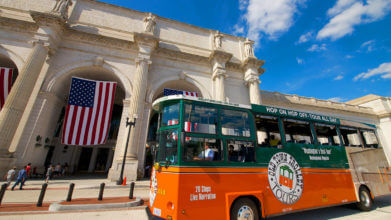
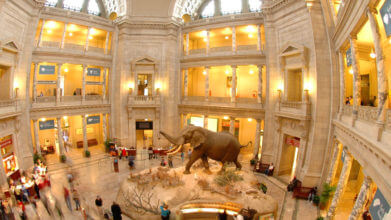
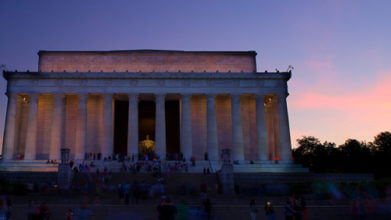
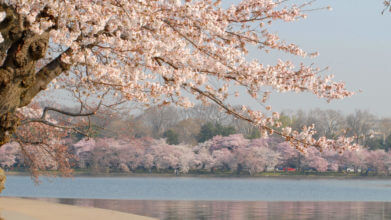
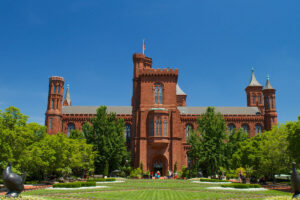 Smithsonian Institution Building
Smithsonian Institution Building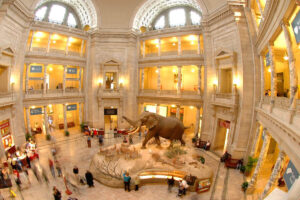 National Museum of Natural History
National Museum of Natural History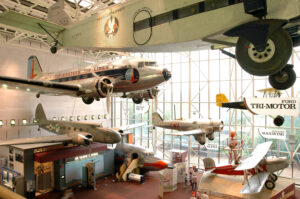 National Air and Space Museum
National Air and Space Museum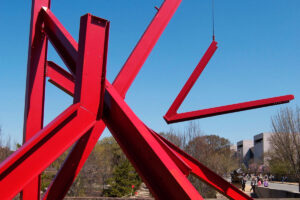 Hirshhorn Museum and Sculpture Garden
Hirshhorn Museum and Sculpture Garden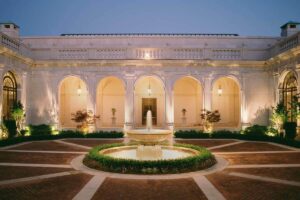 Freer Gallery of Art
Freer Gallery of Art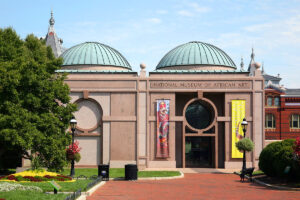 National Museum of African Art
National Museum of African Art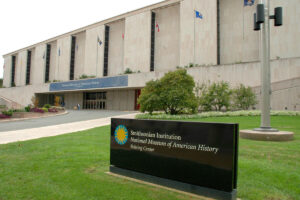 National Museum of American History
National Museum of American History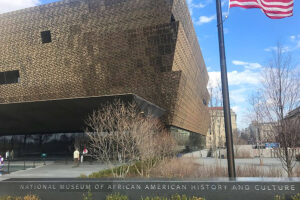 National Museum of African American History and Culture
National Museum of African American History and Culture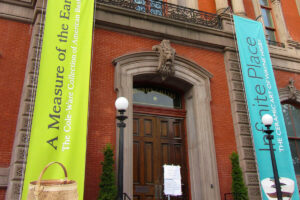 Renwick Gallery of the Smithsonian American Art Museum
Renwick Gallery of the Smithsonian American Art Museum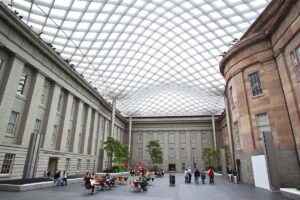 National Portrait Gallery and Smithsonian American Art Museum
National Portrait Gallery and Smithsonian American Art Museum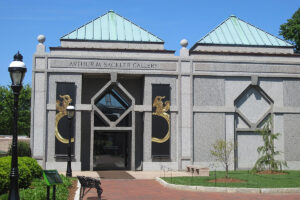 Arthur M. Sackler Gallery
Arthur M. Sackler Gallery